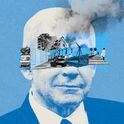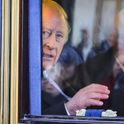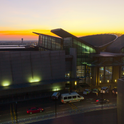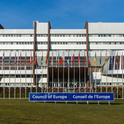I
The baby had been shut in the wardrobe for 20 minutes before her mother, Sheila (not her real name), realised she was at risk of suffocating. On the morning of 7th October, Sheila watched video clips of Hamas terrorists assaulting women and children on a kibbutz near her city of Ashkelon. She knew the terrorists were only a few minutes’ drive away. When she heard sirens, she assumed they’d reached her home. Her baby had just finished nursing and was sleeping peacefully. Sheila placed her in the wardrobe and locked the door. She took a knife from the kitchen and sat down to wait for them. When Sheila came to our trauma clinic a few weeks later she described various symptoms, the most prominent of which was guilt. “I almost killed my child,” she told me. “How can I ever stay alone with her again?”
II
The first criterion for a medical diagnosis of post-traumatic stress disorder is that the patient must have directly experienced or been exposed to a traumatic, life-threatening event. On 7th October, we discovered that this is incorrect: one does not have to be physically present at the event. Seeing it on the news and knowing that you might be next can suffice. On that Saturday morning, when rumours spread of a massacre being perpetrated by Hamas, Israelis went online for information. They did not understand that the things they would be exposed to were radioactive. One year later, people who watched footage of the massacre are still suffering from trauma symptoms: difficulty sleeping, nightmares, flashbacks. This type of debilitation is not limited to war. Even during natural disasters, massive exposure to reporting and posts on social media may cause similar effects, expanding the circle of casualties.
III
Around 40 residents of Kibbutz Nir Oz were slaughtered by Hamas terrorists on 7th October. One out of four members of the small community in southern Israel was killed or taken hostage, and the death toll has since risen to 55, with some killed in Gaza. Noya Dan, an autistic girl, was initially classified as missing, and a picture of her dressed up as Harry Potter spread around the world. But Noya’s body was found, alongside her grandmother’s, near the border fence. The terrorists had taken the two women there and murdered them. The Siman Tovs—Johnny, Tamar, their five-year-old girls Arbel and Shahar, and two-year-old Omer—were slaughtered in their home. The terrorists set the house on fire with the family inside. On a nearby kibbutz, the Idan children hid in a wardrobe while their mother and father were shot to death and their little sister was kidnapped. Chen Almog-Goldstein witnessed her oldest daughter, Yam, being shot in the head at close range, and was then taken to Gaza with her two remaining children.
IV
The Yam Suf hotel in Eilat, on the shores of the Red Sea, has 70 rooms. Nir Oz residents who survived the massacre were evacuated to the hotel straight from the scene of the killings. In the lobby, where diving enthusiasts normally gather, the survivors awaited news of their loved ones. I went to the hotel as part of an emergency delegation from the psychiatric hospital where I work, to provide mental first aid aimed at preventing post-trauma. The first thing you tell trauma victims is: it’s over, you’re safe. But for the community of Nir Oz, it was not over. With many of their fellow kibbutz members held captive in Gaza, 7th October was only the beginning of the ordeal. One year later, it is still not over.
When Israel is in danger, my children are in danger, and yet I think this war must end
V
Nearly 60,000 internally displaced people: on 8th October, one day after the surprise Hamas attack on Israel’s southern border, the extremist Shia militia Hezbollah began firing rockets from Lebanon at communities along Israel’s northern border. More than 58,000 Israelis had to leave, many of whom turned on the news to see their homes reduced to rubble. The government initially evacuated only those living adjacent to the border, but many people from communities further away did not wait for official orders. They do not trust this government. Noa and Nir Baranes and their three children lived on Kibbutz Ortal, in the Golan Heights, which was not evacuated. Noa and Nir were killed when a Hezbollah rocket hit their car as they drove home after work.
VI
“Do you know what I really want?” asks Ido (not his real name) at our third therapy session. “I want to be able to go to the beach again.” Before 7th October, he tells me, he used to go almost every morning. I can imagine him there: bronzed, smiling, dribbling a football on the sand. On cool days, he would run several kilometres before having a swim. In retrospect, he says, that’s what saved him: he was a runner. On 7th October, that meant the difference between life and death. Not all his friends were that lucky. Three months later, Ido can barely leave his home. The terrorists, he says, could be anywhere.
VII
An increase in crime driven by mental health issues is an overlooked symptom of collective trauma. The Israeli newspaper Haaretz has reported several such incidents. A young man whose friend was murdered at the Nova music festival was afraid the terrorists were making their way to central Israel; he was caught after stealing a gun to protect his family. Another young man, who’d been sent to identify the bodies of young victims as part of his army reserve duty, was arrested after violently assaulting his girlfriend when he returned home. Neither of these men had a history of violence; their outbursts occurred after they were exposed to trauma.
VIII
Aryeh Itzik, a legendary ambulance driver from Nir Oz, used to bring the kibbutz women to hospital when they went into labour. He also volunteered to drive Palestinians from Gaza to receive medical treatment in Israel, every Friday, for years. On 7th October, late at night, Aryeh went from house to house to help the first responders identify his friends’ bodies. The next day, he gave an interview on Israeli radio and appealed to Gazans: I helped you for years, now it’s your turn to help me—give us back the people you took.
IX
Vivian Silver, who was murdered in Kibbutz Be’eri, was also a member of the Israeli peace movement. Two days before the Hamas attack, she attended a protest rally with Palestinian and Israeli women, calling for an end to the Israeli occupation. Vivian’s son, Yonatan Zeigen, spoke to her on the phone while she hid from the terrorists in a wardrobe. At first, he thought she’d been abducted to Gaza, but it was later revealed that the terrorists had burned down the house with her inside. Some people called
Vivian Silver a “settler”. Some people still think she is a legitimate victim in the struggle to end the Israeli occupation.
X
“I ran for hours, the terrorists chased us, we were ducks on a shooting range,” a Nova festival survivor told me. “It’s not fun to party next to the biggest prison in the world,” was the response of a Palestinian artist to pictures of young Israelis fleeing the festival-turned-massacre. Yaffa Adar, in her eighties, was snatched from her home on Kibbutz Nir Oz. Her grandson, Tamir, was murdered that day, leaving two fatherless children. The picture of Yaffa, smiling as Hamas terrorists drive her to the Gaza Strip, was shared by a Palestinian-Israeli actor, with the caption: “On her way to a good Palestinian meal.”
XI
Noa Argamani was seen in a video clip as she was dragged over the border into Gaza, begging the terrorists not to kill her. On social media, some responded with a laughter emoji.
XII
Pictures of Palestinians killed in Gaza are not shown on mainstream Israeli media. What we see on our television screens is our own suffering, reflected back to us. On the radio, we hear Israeli mothers weeping. The lamentations for our land are so loud that, for too many of us, they silence the voices coming from the other side of the border: Palestinian mothers grieving their children.
XIII
What makes us blind to the suffering of others? Is it an essential trait, one that wins wars, or might the capacity to recognise the other’s suffering in fact help end the war sooner? Perhaps insensitivity is what allows one to charge ahead.
XIV
Ten Israeli army soldiers and officers have committed suicide since the war began, according to a Haaretz investigation. Some did so during the battles. Not everyone can charge ahead.
Pain can be blinding: you can only see your own suffering
XV
Pain can be blinding: you cannot see anything except your own suffering. Gazan pain is invisible to Israeli eyes. Israeli pain is invisible to Gazan eyes. Pro-Palestinians refuse to acknowledge or grieve the lives lost in Israel. Pro-Israelis refuse to grieve the loss of tens of thousands of civilian lives in Palestine.
XVI
Prime minister Benjamin Netanyahu profits from the notion that if you “support Israel”, you must unequivocally support continuing the war. I live and raise my children in Israel. When Israel is in danger, my children are in danger, and yet I think this war must end. This is precisely why I am incensed when I hear people around the world calling for an end to the war without demanding the return of the hostages, without insisting on security and dignity for Israelis. Palestine has the right to exist, just as Israel does. Otherwise, we will not be able to walk together.
XVII
Some 690,000 shekels: that is the total value of the bribes allegedly taken by Netanyahu. He has petitioned the court to postpone his trial so he can be free to manage the war. The conflict of interest is clear. Netanyahu, who faces three separate criminal charges, has every reason in the world to prolong this war forever.
XVIII
A total of 330 days: that is how long six Israeli hostages—Hersh, Eden, Carmel, Alex, Almog and Ori—survived in Gaza before being murdered in an underground tunnel. Eden Yerushalmi, a young woman from Tel Aviv who was kidnapped from the Nova festival, weighed 36 kilos on the day she died. Hamas starved and murdered these young people. But their blood is also on the hands of Netanyahu, who is doing everything he can to delay a hostage deal.
XIX
There are still more than 100 Israelis—some dead, some alive—being held by Hamas, but many Israelis feel as if their country has been taken hostage by the most extremist coalition in its history. Messianic politicians are trying to destroy what is left of our democracy. We are trapped by an administration that is sacrificing us for its own despicable agenda. The minister of national security, Itamar Ben-Gvir, dispatches his police force to violently break up anti-government protests, a doctor treating an injured protester was himself beaten by a police officer, and dozens of protesters have been detained without cause. They are quickly released, and the judges reprimand the police for making false arrests, but the damage has been done: many people are afraid to take part in demonstrations. Ben-Gvir recently promoted an officer accused of tossing a hand grenade into a crowd of protesters. The trauma is not only from the Hamas attack; it is from within. One person who learned this firsthand is Gadi Kedem, whose daughter, son-in-law and three grandchildren were murdered on 7th October. Kedem was beaten by Netanyahu supporters at a protest calling for a hostage deal.
XX
A million people on the streets: this is former prime minister Ehud Barak’s estimate of the number needed to topple the most destructive government in Israel’s history. Why aren’t they on the streets, then? At first, it was fear. Existential, physical fear, fear of the air-raid sirens that could sound at any minute, of terrorist infiltrations, of an Iranian attack. Frightened people do not go out to demonstrate—they stock up on tinned food. Instead of taking to the streets, they take to the supermarket aisles. When the fear dies down, the guilt creeps in. Each of us knows someone who was called up for reserve duty. Israelis are reluctant to protest because that would be perceived as denigrating the soldiers who risk their lives to rescue the hostages and keep us safe. But this guilt is dangerous, because it paralyses us. Netanyahu knows that broad sectors of the Israeli public will not speak out against him while the country is at war, out of a sense of national solidarity. The more frightened and guilty we feel, the easier we are to manipulate.
XXI
One day. It might be in a week or in two years, but one day it will happen—one day, this war will end, and then we will face the question we usually repress: what now?
The only choice that matters is humanity
XXII
In early July, the Israeli peace camp held a large convention in Tel Aviv. The word “peace” arouses discomfort for many Israelis. How can we strive to make peace with people who entered our kibbutzim and deliberately slaughtered entire families? How can we even talk about a future agreement when the war is still raging? And yet, the alternative is far more terrifying.
XXIII
Two states. Those who speak of one state—a so-called binational state—ignore the magnitude of the hatred between the two peoples. Those who claim that it’s impossible to divide the land in two forget that, with enough will and creativity, all sorts of solutions are possible. But there must be mutual recognition of the suffering. All eyes must be opened to the other side’s trauma.
XXIV
This is not a zero-sum game, and it is not the Olympics of suffering: we can fight for the Palestinians’ right to a state and to life, while at the same time insisting on the vitality of Israel’s existence. One can define oneself as a Zionist and at the same time call for an end to Gazans’ horrific suffering. Extremist leaders on both sides insist we must choose between acknowledging the 7th October massacre and acknowledging the suffering of Gazans. But this is a false dichotomy. The only choice that matters is humanity.
XXV
Fragments: when reality falls apart, writing is almost impossible. The everyday dissolves into fragments. As therapists, we ask trauma patients to write a narrative, to gather the pieces and join them into a whole. I do this every day at the hospital where I treat survivors of the Nova festival, but I find it difficult to do myself. Every paragraph I’ve tried to write has crumbled before my eyes. At the end of every sentence is a crack. I try to look through the cracks, to give them names. These are their names: dichotomies. Attending to the suffering of one person while erasing the suffering of another. Treating suffering as justification for your actions. Addressing emotion at the expense of a cold analysis of reality. A cold analysis of reality at the expense of true recognition of the horrifying meaning of suffering.
XXVI
For things to be different, there must be dialogue. But what are the chances of Israelis and Palestinians talking to each other, when even their supporters in Europe and the US cannot conduct a genuine debate without resorting to demonisation?
XXVII
Ten kilos of hummus a day; that’s what Sergio Helman, the owner of Bluebus, a restaurant near Israel’s northern border, prepares when he arrives every day at his business in an abandoned shopping centre, hummus that no one will buy. He told Haaretz that this is what keeps him alive. The nearby kibbutzim were evacuated. People are afraid to come to an area where they have 15 seconds to safely reach a bomb shelter once the siren starts—before the missile lands. But making hummus is what Sergio knows, and so that’s what he does. He gets up every morning in his abandoned kibbutz, drives to his restaurant, and makes hummus. So as not to sit around at home. So as not to lose his mind.
This essay was translated by Jessica Cohen. It is one of a pair about this year of darkness in the Middle East. It has been published alongside an essay by Samir El-Youssef, a Palestinian-British writer and critic.












